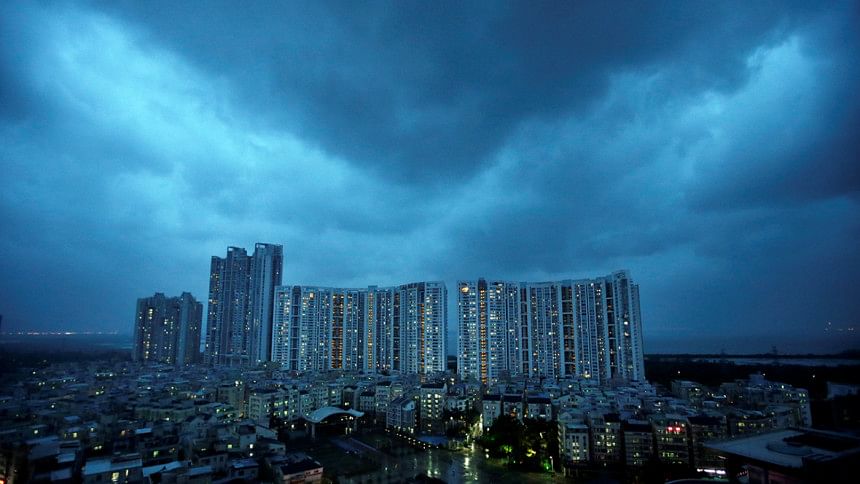Typhoon Mangkhut slams into China

A super typhoon made landfall in China's Guangdong yesterday, the country's most populous province, after wreaking havoc in Hong Kong and Macau and killing potentially more than 50 people in the Philippines.
Packing winds of more than 200 kph (125 mph), tropical cyclone Mangkhut is considered the strongest to hit the region this year, equivalent to a maximum Category 5 "intense hurricane" in the Atlantic.
- Super typhoon kills potentially more than 50 in the Philippines
- China and Macau brace for impact after Hong Kong buffeted
- Packs gale force winds of more than 200 kph (125 mph)
That's more powerful than the maximum sustained winds of 150 kph (90 mph) when Hurricane Florence roared into North Carolina in the United States on Friday.
The eye of Mangkhut, the Thai name for Southeast Asia's mangosteen fruit, skirted 100 kms (62 miles) south of Hong Kong but the former British colony was still caught in the typhoon's swirling bands of rain and gale-force winds.
Hong Kong raised its highest No 10 typhoon signal at mid-morning as ferocious winds uprooted trees and smashed windows in office and residential buildings, some of which swayed in the gusts, residents said.
"It swayed for quite a long time, at least two hours. It made me feel so dizzy," said Elaine Wong, who lives in a high-rise tower in Kowloon.
Water levels surged 3.5 m (12 ft) in some places, waves swamped roads and washed up live fish, washing into some residential blocks and a mall in an eastern district.

"It's the worst I've seen," resident Martin Wong told Reuters. "I've not seen the roads flood like this, (and) the windows shake like this, before."
The plans of tens of thousands of travellers were disrupted by flight cancellations at Hong Kong's international airport, a major regional hub. Airlines such as flagship carrier Cathay Pacific cancelled many flights last week.
In the Philippines, casualties reported by various agencies yesterday evening indicate the death toll from the impact of Mangkhut could exceed 50, with most killed in landslides in or near mountainous areas of the Cordillera region.
Francis Tolentino, an advisor to President Rodrigo Duterte and head of the government's disaster coordination, said the latest number of casualties was 33 dead and 56 missing.
But the head of the military's Northern Luzon Command, Emmanuel Salamat, told Reuters that at least 19 more were killed in landslides in one part of Benguet province.

The 19 who died were part of a bigger group of 43 people, likely miners, and those who were still alive were feared to be trapped in an old mining bunkhouse that had collapsed under rubble, according to Tolentino.
Search and rescue missions were ongoing, and a local mayor in Benguet, Victorio Palangdan, said he feared the number killed there could be more than 100.
Separately, the coastguard said it had recovered the bodies of three people.
In Macau, which halted casino gambling late on Saturday and put China's People's Liberation Army on standby for disaster relief help, some streets were flooded.


 For all latest news, follow The Daily Star's Google News channel.
For all latest news, follow The Daily Star's Google News channel. 








Comments